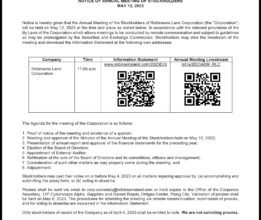What is a woman?

“Woman, I can hardly express…,” so sang John Lennon.
Unfortunately, nowadays, not many people apparently can even express what a “woman” is. Not even US Supreme Court nominees. And if USA Today is to be believed, not even members of the medical profession. Which is disconcerting because the latter were also the same ones telling us to be completely terrified of COVID and inject ourselves continually with vaccines. But that’s another matter.
If indeed there is no way, as liberal progressives insist, to coherently define what a woman is, then:
• chivalry is not a thing;
• the women and children first rule should be set aside;
• separate sports divisions and separate toilets have no rationale;
• sex based criminal laws protecting women should be repealed;
• women’s rights legislation should be repealed;
• treaties involving women’s rights should be terminated;
• gender equality studies should be shut down; and,
• Women’s Month is non-sensical.
But until this year, everybody knew what a woman is. Cambridge Dictionary defines “woman” as “an adult female human being” or “a wife or female sexual partner.” The Collins Dictionary says that a “woman” is “an adult female human being.” Wiki: “A woman is an adult female human.” And what is a “female”? That “sex that can give birth to young or produce eggs” (Cambridge Dictionary), “produce babies from its body” (Collins Dictionary), or “the sex of an organism that produces the large non-motile ova (egg cells), the type of gamete (sex cell) that fuses with the male gamete during sexual reproduction” (Wiki).
Liberal progressives however try to confuse the issue by making a false distinction between “sex” and “gender,” the former (they say) are physical characteristics including genitalia and chromosomes while the latter is how a person identifies.
The problem with that subjective approach is ultimately it doesn’t make sense; taken to its logical conclusion, the words “man” and “woman” would have no meaning whatsoever. And if indeed being a woman is just a “construct,” then it still begs the question of what that person identifying as a “woman” actually means, that identification (by the way) being also obviously a construct.
Sex and gender clearly cannot be separated from each other. Glenn Stanton, Focus on the Family director of family formation studies, writes (“Why Sex and Gender Are Not Two Different Things,” The Federalist, Oct. 15, 2019): “From the 14th century, gender has referred to the essence of what male and female are, issuing from the Proto-Indo-European root gen- or gene-. It fundamentally references the creation, birth, and begetting of new human beings, as in, to generate or engender.”
Furthermore, “gender’s grammatical root — gene/gen — is also associated with such words as genesis, generation (both in terms of being generated as well as the historical time-frame one was generated) and yes, of course, genitals, those two unavoidably binary parts of the human anatomy that help our gonads and associated cooperative parts do what gonads do: generate.”
Thus, “gender” is actually “the furthest thing from being a mere social construct,” the words “‘sex’ and ‘gender’ are indeed two objective sides of the same coin. Anyone who says differently is just making stuff up.”
Indeed, what makes a woman a woman (and a man a man) run to the very core of our DNA, the fundamental molecule containing genetic instructions of our physical being. A chain of DNA is called a “chromosome.” Women have two similar X chromosomes. Men, on the other hand, have one X and one Y chromosome.
And what makes a woman a woman continue to the very wiring of women’s brains — “Women excel in several measures of verbal ability — pretty much all of them, except for verbal analogies. Women’s reading comprehension and writing ability consistently exceed that of men, on average. They outperform men in tests of fine-motor coordination and perceptual speed. They’re more adept at retrieving information from long-term memory.
“Men, on average, can more easily juggle items in working memory. They have superior visuospatial skills: They’re better at visualizing what happens when a complicated two- or three-dimensional shape is rotated in space, at correctly determining angles from the horizontal, at tracking moving objects and at aiming projectiles.” (“Two minds: The cognitive differences between men and women,” Stanford Medicine, 2017).
The characteristics that make up a woman are so profound that some scientists even claim that men are more closely related to male chimpanzees than to women! (https://bit.ly/36AmNPv and here https://bit.ly/3Lrgpsr.)
Wisely, our own Supreme Court so far has refused to buckle down to progressive nonsense. In Silverio vs. Republic (G.R. No. 174689), it ruled — quite correctly — that “the sex of a person is determined at birth” and is “immutable.” Thus, “sex is defined as ‘the sum of peculiarities of structure and function that distinguish a male from a female’ or ‘the distinction between male and female.’ Female is ‘the sex that produces ova or bears young’ and male is ‘the sex that has organs to produce spermatozoa for fertilizing ova.’”
Besides, it would be a quite disturbing world if John Lennon (“Woman”), Billy Joel (“She’s Always A Woman”), Urge Overkill (“Girl, You’ll Be a Woman Soon”), and Roy Orbison (“Pretty Woman”) all don’t know what they’re singing about.
Jemy Gatdula is a senior fellow of the Philippine Council for Foreign Relations and a Philippine Judicial Academy law lecturer for constitutional philosophy and jurisprudence
https://www.facebook.com/jigatdula/
Twitter@jemygatdula




